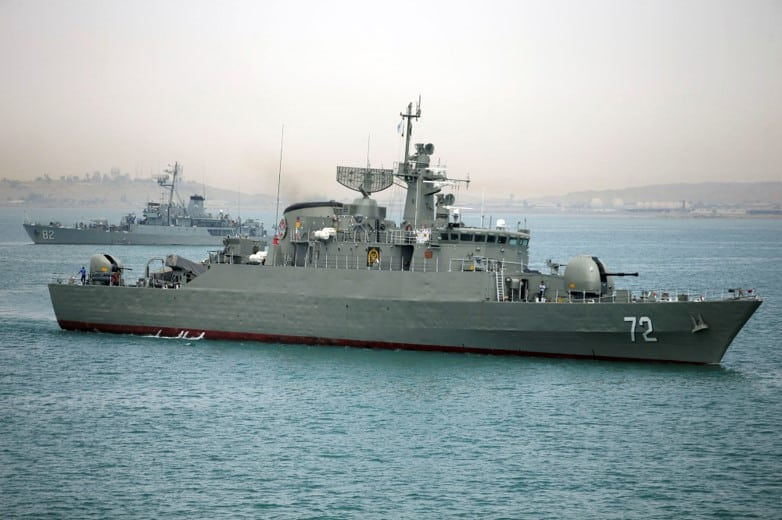
Latest Developments
Iran has deployed its warship the Alborz to the Red Sea, Tehran’s state media reported on January 1. On January 2, the Iranian-backed Houthis in Yemen launched two anti-ship ballistic missiles into the southern Red Sea, said U.S. Central Command (CENTCOM). The missiles landed near several ships, but none of them was damaged. “These illegal actions endangered the lives of dozens of innocent mariners and continue to disrupt the free flow of international commerce,” CENTCOM said. “This is the 24th attack against merchant shipping in the Southern Red Sea since Nov. 19.”
Expert Analysis
“The decades-old Iranian Alborz naval vessel is not exactly the most formidable ship on the high seas. The United States has more than enough combat power in the region to deal with the Alborz should Tehran decide it is interested in a test of strength. As a matter of force protection and deterrence, the real question is whether the White House will grant the U.S. military permission to target Houthi infrastructure in Yemen that the group is using to conduct these attacks.” — Bradley Bowman, Senior Director of FDD’s Center on Military and Political Power
“Iran has successfully transferred its maritime harassment strategy from the Persian Gulf to the Red Sea. The Houthis, just like their patron, threaten freedom of navigation and the flow of oil across a major international waterway using anti-ship missiles, drones, and fast-attack craft. In so doing, Iran and its proxies are using military means to inflict immediate economic costs. These costs can be seen in rising oil prices and insurance premiums that Iran hopes will pressure Washington to pull the plug on Jerusalem’s war against Hamas.” — Behnam Ben Taleblu, FDD Senior Fellow
“The Houthis continue to attack shipping in the Red Sea. This illustrates that despite their recent losses of several small boats, they believe they have impunity. The Houthis must be deterred and their threats to shipping must stop. The Houthi threats to commercial ships are a grave danger and fuel instability in the Middle East.” — Seth J. Frantzman, FDD Adjunct Fellow
Operation Prosperity Guardian
In response to Houthi attacks on commercial vessels, Secretary of Defense Lloyd Austin announced the establishment of Operation Prosperity Guardian on December 18. The operation is being run by the pre-existing Combined Task Force 153, which is a component of the U.S.-led Combined Maritime Forces in the Middle East and focuses on the Red Sea. Almost two dozen nations are supporting the operation, with many doing so discretely out of concern for domestic or regional politics. The Houthis have attempted to portray their attacks as opposing Israel and its military actions in Gaza. In reality, the attacks have threatened vessels and individuals from around the world attempting to transit the vital maritime chokepoint.
U.S. and Allied Naval Forces See Action
On December 31, four small boats of Iran-backed Houthi rebels attacked a commercial ship in the Red Sea. When U.S. Navy helicopters arrived in response to the commercial ship’s distress call, the Houthis fired on them. “The U.S. Navy helicopters returned fire in self-defense, sinking three of the four small boats, and killing the crews,” said CENTCOM in a statement. “The fourth boat fled the area. There was no damage to U.S. personnel or equipment.”
In addition to these developments, the U.S. military on December 26 shot down 12 suicide drones, three anti-ship ballistic missiles, and two land-attack cruise missiles launched by the Houthis, according to CENTCOM. On December 23, the USS Laboon shot down four drones from Houthi-controlled territory. Last month, British and French vessels shot down Houthi drones as well.
